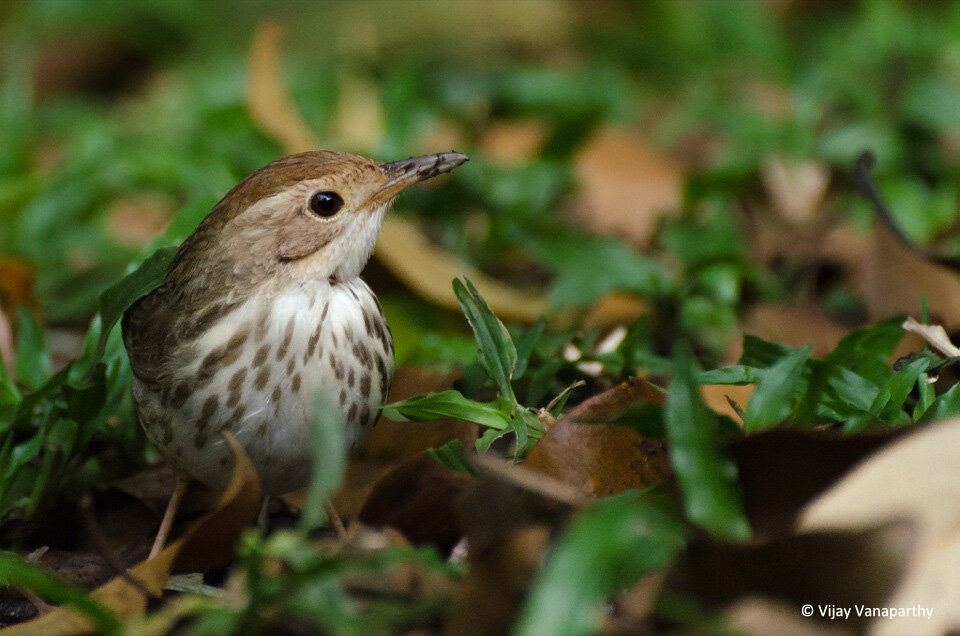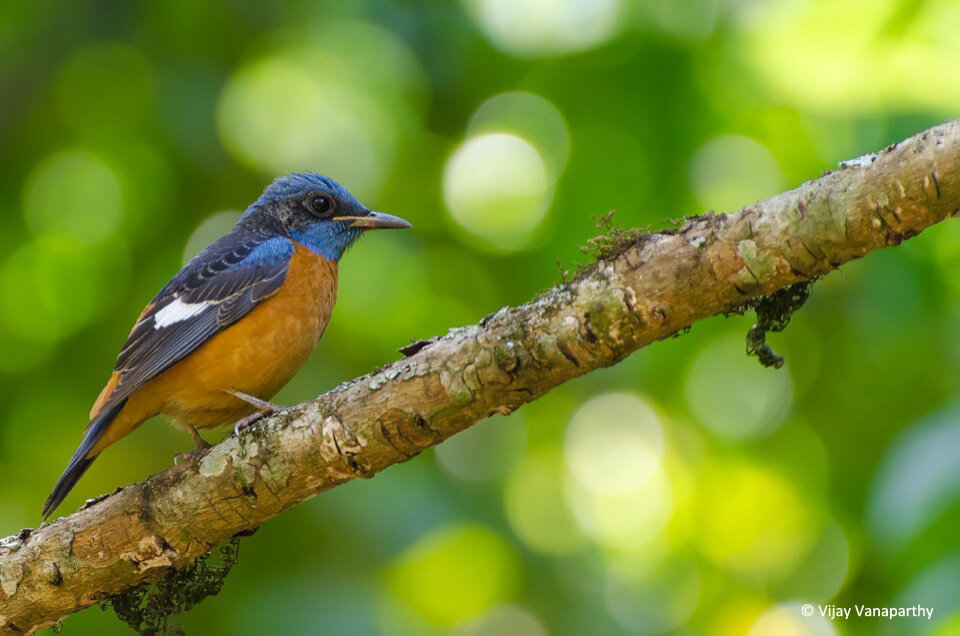Nandi Hills – Escape the City
This a co-authored article with Vijay Vanaparthy, which first appeared on JLR Explore.
As Bangalore’s air chokes up with the disappearance of its trees and the appearance of more concrete and vehicles, a city dweller can’t help but ask for a breath of fresh air. For the intrepid naturalist, one of the city’s better-kept secrets lies 1800 feet above it. Nandibetta aka Nandi Hills, plays home to not just some very interesting wildlife, but also a rich history and culture.
Nandi Hills’ historical relevance comes from about a thousand years of royal patronage, leading right up to the rule of Tipu Sultan. In 1791, Lord Cornwallis stormed what was the legendary, impregnable fort of Nandidurg. Ever since, Nandibetta has enjoyed the patronage of the government, be it British or Indian. In modern times, this place has found attention from the department of horticulture, which runs a botanical garden atop the hill.
History apart, Nandi Hills is of great geological importance to Bangalore; you could say that it holds the key to Bangalore’s water security. After all, the hill holds the source of the mysterious Arkavathy River, which until not very long ago, accounted for up to 20% of Bangalore’s water supply. With its elevation advantage over Bangalore, Nandi Hills almost towers over the city’s smog and has a climate of its own. Its forest acts as substrate for cloud condensation and that helps sustain its evergreen nature. This in turn means that across the year, birdlife at the park stays strong, and particularly in winters, this is an inviting destination for migrant species.
Nandi Hills is probably best visited on cold winter mornings. The adjoining farmlands and the winter fog combine to create rather dramatic scenes. As you drive up the hill though, you can leave the fog behind and arrive at a rather clear scene at the peak.
View from Nandi Hills
Nandi Hills from a distance
There’s always debate about where the name Nandi Hills comes from, and while there are several theories to this, the most consistent one is that the hills look like a sleeping bull from a distance. While we’ve struggled to make out that distinct shape, we leave it to you to decide from the photo whether that is really an accurate description. While you’re at it, cast an eye on the hillock to the right; the steep drop you see there is Tipu’s drop – the infamous place from where Tipu Sultan threw his condemned prisoners to death.
Bonnet macaques - the prominent mammals of the hill
For most visitors at Nandibetta, its macaques represent the most visible wildlife. They usually mean no harm as long as you don’t trouble them. Human beings are a constant source of garbage and sadly enough, for urban wildlife, garbage is food. If they don’t find food easily though, don’t be surprised if they snatch a snack from you or come looking for goodies in your bag!
Wildflowers on the hill
The vegetation at Nandi Hills, while typical of the hills, can be quite disturbing at first sight. When you drive up the groves of trees, it’s impossible to miss the exotic eucalyptus plantations all over. On one hand, it’s debatable if these trees are really as bad for the environment and the native species, as they’re made out to be; on the other, it’s worth asking if we could have planted native alternatives along these slopes. After a while though, the vegetation of Nandi Hills grows on you. It’s probably the diversity of vegetation that results in a thriving ecosystem. Thankfully, the department of horticulture hasn’t made Nandibetta a monoculture and therein lies its beauty.
The horticulture department’s plantations are just one facet of Nandi Hills. Encounters with absolutely beautiful wild vegetation reveal the others. In summer, the wild-flowers here make for a picture-perfect hillside.
Most birders from Bangalore flock to Nandi Hills for an easy sight of birds otherwise known as ‘Western Ghats specialities’. The resident Nilgiri Wood Pigeons make frequent appearances in the nursery area of the park. Over years of being in close proximity to humans, the birds of Nandi Hills have become accustomed to observation; usual skulkers like the Puff-throated Babbler routinely come out in the open, giving birders an unobstructed view.
Most birders from Bangalore flock to Nandi Hills for an easy sight of birds otherwise known as ‘Western Ghats specialities’. The resident Nilgiri Wood Pigeons make frequent appearances in the nursery area of the park. Over years of being in close proximity to humans, the birds of Nandi Hills have become accustomed to observation; usual skulkers like the Puff-throated Babbler routinely come out in the open, giving birders an unobstructed view.
The big jackpot for nature enthusiasts though is when they find the thrushes that the hills host during winters. The Blue-capped Rock Thrush, the Eurasian Blackbird, and the Orange-headed Thrush, alongwith the Malabar Whistling Thrush and the Pied Thrush, tend to be the big draws of Nandi Hills.





March tends to be a great time to find one of the most colourful visitors of Nandi Hills – the Indian Pitta. As the weather gets warmer, this rather crepuscular bird becomes active all day, to get a drink of water. Birders invariably see it visit the nursery several times a day.
Indian Pitta
A single page will never do justice to the immense birding possibilities at this place, and yet, no article about Nandi Hills is ever complete without a mention of the blue monarchs who own the hilltop. The Indian Blue Robin probably knows of its celebrity status with birders, and appears as suddenly as it disappears, leaving onlookers quite astonished. The Tickell’s Blue Flycatcher on the other hand, has no such hang-ups. It flies about fearlessly across the park area, so don’t be shocked if it were to come and sit right next to you. Of course, this is typical of many other flycatchers at Nandi Hills, and that’s what makes it full of surprises.
Indian blue robin
Tickell’s blue flycatcher
With so much happening in the natural world, it’s easy to miss the archaeological highlights of Nandi Hills. Well, the most important cultural monument of Nandi Hills, the BhogaNandeeshwara temple is in the exact opposite direction of the hill itself. This 9th century monument is as seeped in history as it gets. It’s robust construction and active status belies its age – after all it’s enjoyed the patronage of five successive south Indian dynasties. The temple’s priests are a rather friendly lot. Given time for their daily rituals, they’re happy to tell you about the temple. While some knowledge of Kannada is useful, they’re all quite well versed in English and can make great conversation.
Speaking of conversations, you wouldn’t want to miss a conversation with the self appointed temple guide – Shivanna. Shivanna tries to earn a living as a guide at this temple though some say he’s lost his sanity making sketches of the innumerable sculptures that you see here. His old, tattered sketchbook bears testimony to his connection to the monument. Sane or not, Shivanna makes for rather enjoyable mornings at the temple.
With so much to do and see, you’d probably want to stay overnight at Nandi Hills and give yourself some more time to breathe in the fresh air. An economical stay option is KSTDC Mayura Pinetop – you can quite easily get a booking on their website, www.karnatakaholidays.net. If you prefer something fancier, there’s the Horticulture Department’s heritage guest-house, Nehru Nilaya. This beautiful, vintage bungalow used to be the residence of KCB Mark Cubbon, the commissioner of Mysore back in the day. Unfortunately it’s not very clear how you can get a booking. If you find out, do let others know.

